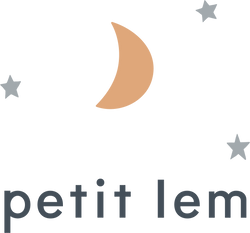Healthy teeth for baby
Healthy teeth are an important part of your child’s overall well-being: they are essential for eating well and learning to talk and serve as placeholders for permanent teeth. It’s easy to overlook dental hygiene, especially when you can barely see those pearly whites, but starting a routine and making it a priority early can save you a lot of headache in the long run.
Start before teeth come in
It’s important to keep your baby’s teeth and gums clean from birth. Just because you can’t see the teeth doesn’t mean they aren’t there. In fact, babies are usually born with 20 primary teeth that will only start coming through the gums at around 6 months. Get into the habit of wiping your baby’s gums right after each feeding with a wet washcloth or gauze wrapped around your index finger. You can also buy a baby finger toothbrush, a rubbery gum massager with soft bristles that cleans teeth, massages gums and cleans the tongue removing bacteria and plaque for cavity prevention. Yes, infants can get cavities!

First teeth
Babies begin teething between 4 and 6 months and might experience red and swollen gums during this time. Give your infant a chilled teething ring or cold wet washcloth to help ease his symptoms.
Between 6 to 8 months, your baby will get their first tooth and by 30 months, all the first teeth should have come into the mouth. Most parents might think that baby teeth aren’t important since they will be replaced but in fact, tooth decay and gum infections can affect the spacing of permanent teeth. Continue to clean gums after feeding the same way you did before. There is no need for toothpaste yet, especially since a baby can’t understand the need to spit it out.

How to avoid cavities
The worst thing you can do is let your baby fall asleep with a bottle of milk, or juice which contains a lot of sugar, in their mouth. The sugar will stay on their teeth and gums overnight and notoriously causes cavities. Moreover, don’t make the bottle a source of comfort. Many babies want to suck on a bottle long after they’re done feeding. Take the bottle away. You can start weaning your baby off the bottle as soon as the child eats enough solids. At 12 to 14 months, most children can drink from a cup. As a general rule, avoid sugary drinks and food as much as possible. Make it a point to take away any pacifier (finger or thumb, too) after the age of 3. Be aware of the initial signs of a cavity, like brown or white spots on their teeth, and minor pitting, which may indicate tooth decay. If that’s the case, schedule an appointment with a dentist right away.
The importance of fluoride
Even though your baby isn’t using fluoride toothpaste yet, it’s important they receive enough fluoride which helps prevent tooth decay. Tap water usually contains a beneficial amount, or if your baby is too young, you can ask your pediatrician about supplements that can be taken after 6 months.

Brushing after age 2
It’s now safe to use a pea sized amount of fluoridated toothpaste to brush teeth twice a day. Your child can now understand and might actually find it amusing to spit out the toothpaste. Teach them how to brush their teeth by doing it side by side and letting them mimic you. Once they’ve done a pass on their own, though, make sure you go in and brush the hard to get corners and back teeth.

Schedule a Dental Exam
Schedule their first dentist appointment within 6 months of the first tooth appearing or before their first birthday. It’s important to get them comfortable with visiting the dentist and to have a regular follow up, as to not miss any important developments.







